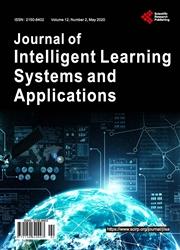Error-Free Training via Information Structuring in the Classification Problem
引用次数: 0
Abstract
The present paper solves the training problem that comprises the initial phases of the classification problem using the data matrix invariant method. The method is reduced to an approximate “slicing” of the information contained in the problem, which leads to its structuring. According to this method, the values of each feature are divided into an equal number of intervals, and lists of objects falling into these intervals are constructed. Objects are identified by a set of numbers of intervals, i.e., indices, for each feature. Assuming that the feature values within any interval are approximately the same, we calculate frequency features for objects of different classes that are equal to the frequencies of the corresponding indices. These features allow us to determine the frequency of any object class as the sum of the frequencies of the indices. For any number of intervals, the maximum frequency corresponds to a class object. If the features do not contain repeated values, the error rate of training tends to zero for an infinite number of intervals. If this condition is not fulfilled, a preliminary randomization of the features should be carried out.基于信息结构的分类问题无误训练
本文使用数据矩阵不变方法解决了包括分类问题初始阶段的训练问题。该方法被简化为对问题中包含的信息进行近似“切片”,从而导致其结构化。根据该方法,将每个特征的值划分为相等数量的区间,并构建落入这些区间的对象列表。对象由一组间隔(即每个特征的索引)来识别。假设任何区间内的特征值大致相同,我们计算不同类别对象的频率特征,这些特征等于相应索引的频率。这些特征使我们能够将任何对象类的频率确定为索引的频率之和。对于任意数量的间隔,最大频率对应于一个类对象。如果特征不包含重复值,那么在无限多个区间内,训练的错误率往往为零。如果不满足此条件,则应对特征进行初步随机化。
本文章由计算机程序翻译,如有差异,请以英文原文为准。
求助全文
约1分钟内获得全文
求助全文

 求助内容:
求助内容: 应助结果提醒方式:
应助结果提醒方式:


